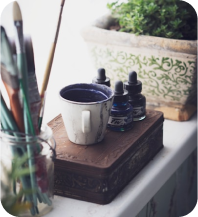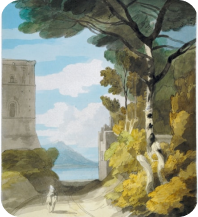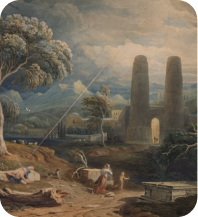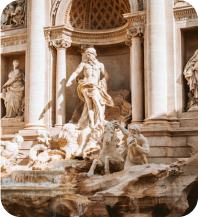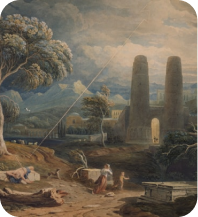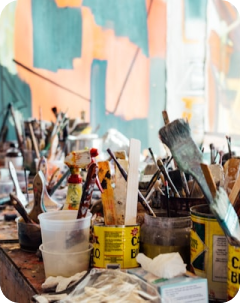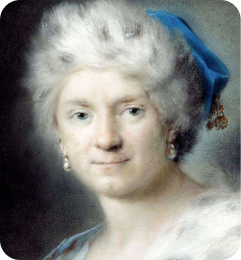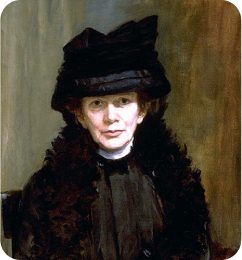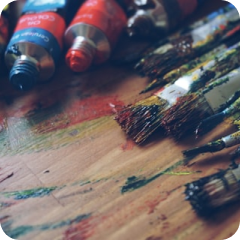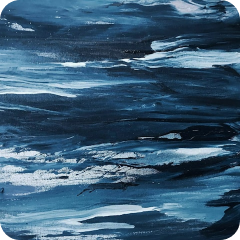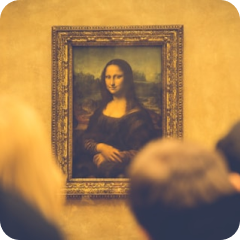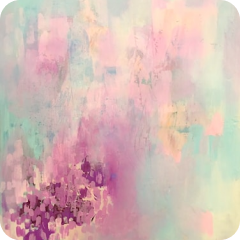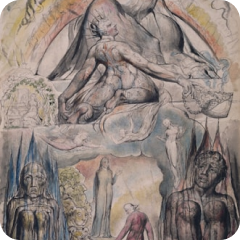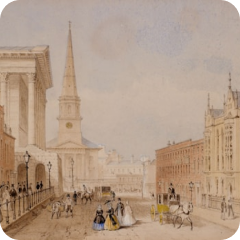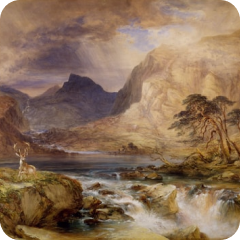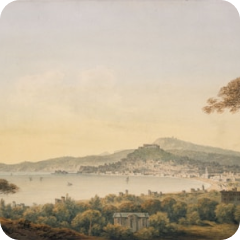Bring Your Walls to Life with Trumovo Canvas Prints
High-quality, customizable canvas art prints for any space

Create Your Custom Canvas in 4 Easy Steps

Step 1
Upload Your Image to the site

Step 2
Choose Size & Style

Step 3
Preview Your Design

Step 4
Place Your Order & Enjoy
;)
Top Categories
;)


Durable Prints
Long-lasting quality with vibrant colors.


Unique Designs
A variety of styles for every taste.


Personalized Art
Upload your image and create custom pieces.
On Sale Now
About Trumovo
Discover our exquisite collection of premium, tailor-made canvas art prints, designed to add a touch of elegance and personality to every room in your home. Whether you're looking to enhance your living room, bedroom, or office space, our art prints offer the perfect blend of style and sophistication, ensuring that each piece complements your unique taste and decor.
Hidden Gems
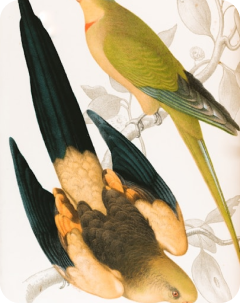
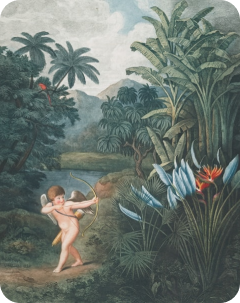


What Our Customers Say

“Lorem ipsum dolor sit amet consectetur. Nunc malesuada varius gravida lacus. Arcu fames vitae neque nulla hendrerit neque augue. Tortor ultricies lobortis consectetur commodo. Pretium eget lacus magna vel in eu amet sit.”

TechGuru88
Apex Solutions

“Lorem ipsum dolor sit amet consectetur. Nunc malesuada varius gravida lacus. Arcu fames vitae neque nulla hendrerit neque augue. Tortor ultricies lobortis consectetur commodo. Pretium eget lacus magna vel in eu amet sit.”

SunnyTraveler92
Luminous Innovations

“Lorem ipsum dolor sit amet consectetur. Nunc malesuada varius gravida lacus. Arcu fames vitae neque nulla hendrerit neque augue. Tortor ultricies lobortis consectetur commodo. Pretium eget lacus magna vel in eu amet sit.”

ArtisticSoul77
Nexus Dynamics

“Lorem ipsum dolor sit amet consectetur. Nunc malesuada varius gravida lacus. Arcu fames vitae neque nulla hendrerit neque augue. Tortor ultricies lobortis consectetur commodo. Pretium eget lacus magna vel in eu amet sit.”

SunnyTraveler92
Luminous Innovations
The Ultimate Guide to Best Canvas Art Prints for Wall Decoration
The profound transformation our dwelling spaces underwent during recent global circumstances illuminated the paramount importance of creating sanctuary-like environments within our residences. This unprecedented period of extended indoor habitation underscored how crucial it becomes to meticulously curate our living quarters into havens that seamlessly blend aesthetic magnificence, practical functionality, and genuine enjoyment. The realization dawned upon countless individuals that our homes serve as multifaceted sanctuaries requiring careful attention to every decorative element, particularly wall embellishments that define the character and atmosphere of each room.
Contemporary homeowners have embarked upon ambitious journeys of spatial redesign, dedicating considerable effort to understanding their personal preferences and lifestyle requirements. This introspective process has led many to discover previously unknown aspects of their aesthetic sensibilities, ultimately guiding them toward more intentional and meaningful interior design choices. The spectrum of design philosophies adopted ranges dramatically, from those embracing radical minimalist approaches characterized by pristine lines and deliberately sparse furnishing arrangements, to others celebrating maximalist expressions that proudly showcase personal narratives through abundant decorative objects, varied textural elements, and eclectic stylistic combinations.
During this period of heightened domestic awareness, the significance of wall-mounted artistic expressions became undeniably apparent. Scientific research consistently validates what many intuitively understand: the presence of visual art in residential environments profoundly influences psychological well-being, emotional stability, and overall quality of life. These empirical studies demonstrate the measurable benefits of incorporating thoughtfully selected artistic pieces into daily living spaces.
Despite acknowledging the fundamental importance of artistic elements in home environments, numerous individuals find themselves overwhelmed when navigating the complex landscape of art acquisition. The highly personal nature of artistic appreciation, combined with the vast array of available options, can transform what should be an enjoyable selection process into a daunting and confusing endeavor. The challenge becomes particularly pronounced when seeking the best canvas art prints for wall decoration that will serve as enduring sources of inspiration and visual pleasure.
Understanding the Emotional Resonance of Artistic Selections
The psychological impact of visual art extends far beyond mere decorative enhancement, penetrating deep into the realm of emotional well-being and mental stimulation. When selecting the best canvas art prints for wall display, the emotional connection between viewer and artwork becomes the foundational element upon which all other considerations should be built. This connection transcends superficial aesthetic appeal, reaching into the viewer's core emotional landscape to create lasting impressions that influence daily mood, creative inspiration, and overall satisfaction with one's living environment.
Contemporary neuroscience research reveals fascinating insights into how visual stimuli affect brain chemistry and emotional states. Exposure to visually appealing artwork triggers the release of dopamine, the neurotransmitter associated with pleasure and reward, while also activating regions of the brain responsible for memory formation and emotional processing. This biological response explains why certain pieces seem to resonate immediately upon viewing, creating an almost magnetic attraction that transcends rational explanation.
The process of evaluating emotional impact requires deliberate engagement with potential art pieces. Rather than rushing through selection, prospective buyers should invest substantial time in contemplative observation. This involves positioning oneself at various distances and angles from the artwork, allowing the visual experience to unfold naturally without predetermined expectations or judgments. The initial moments of engagement often prove most revealing, as spontaneous emotional responses tend to be more authentic than carefully considered analytical assessments.
During this contemplative observation period, attention should be directed toward immediate physical sensations and emotional shifts. Does the piece evoke feelings of tranquility, excitement, nostalgia, or intrigue? Perhaps certain color combinations trigger memories of beloved locations or significant life events. The subject matter might resonate with personal experiences, cultural background, or aspirational goals. These spontaneous reactions provide valuable insights into whether a particular piece will continue to provide emotional satisfaction over extended periods.
The temporal aspect of emotional connection deserves particular consideration. While some artworks create immediate impact through bold visual statements or striking compositional elements, others reveal their emotional depth gradually through repeated viewing. The best canvas art prints for wall installation often possess this quality of sustained interest, continuing to offer new discoveries and emotional nuances even after months or years of daily exposure.
Color psychology plays a crucial role in emotional response to artwork. Warm hues such as reds, oranges, and yellows tend to energize and stimulate, making them excellent choices for social spaces where conversation and activity are desired. Cool tones including blues, greens, and purples generally promote relaxation and contemplation, making them ideal for bedrooms, reading nooks, or meditation spaces. However, individual responses to color can vary significantly based on personal associations, cultural background, and psychological factors.
The subject matter of artistic pieces also significantly influences emotional impact. Natural landscapes often evoke feelings of peace and connection to the outdoors, particularly valuable for urban dwellers with limited access to natural environments. Abstract compositions might stimulate creative thinking and provide endless opportunities for personal interpretation. Figurative works can create emotional connections through human representation or storytelling elements.
Analyzing Visual Harmony Within Residential Environments
The successful incorporation of canvas art prints into residential spaces requires careful consideration of visual cohesion and spatial dynamics. This process extends beyond simple color matching to encompass comprehensive understanding of proportional relationships, stylistic consistency, and atmospheric creation. The most effective wall art installations create seamless integration between artistic elements and existing interior design components, resulting in unified environments that feel deliberately crafted rather than accidentally assembled.
Scale relationships represent perhaps the most critical visual consideration when selecting artwork for residential display. The proportional relationship between art pieces and surrounding architectural elements, furniture, and decorative objects determines whether the final installation feels balanced and intentional or awkward and displaced. Oversized pieces can overwhelm modest spaces, creating visual chaos and making rooms feel cramped or unbalanced. Conversely, undersized artwork often appears insignificant when placed in expansive areas, failing to provide adequate visual anchor points or create meaningful focal areas.
Professional interior designers frequently employ the rule of visual weight when determining appropriate sizing for wall art installations. This principle suggests that artwork should occupy approximately two-thirds to three-quarters of the available wall space above furniture pieces, creating proportional relationships that feel natural and deliberate. However, these guidelines should be adapted based on ceiling height, room dimensions, and overall design philosophy.
Color harmony represents another fundamental aspect of visual compatibility. Successful art integration requires understanding how chosen pieces will interact with existing color schemes while potentially introducing new tonal elements that enhance rather than conflict with established palettes. This doesn't necessarily mean exact color matching; instead, it involves creating complementary relationships that add visual interest while maintaining overall cohesion.
The concept of color temperature deserves particular attention when evaluating potential art pieces. Warm-toned artwork featuring reds, oranges, and yellows can energize spaces while creating intimate, cozy atmospheres. Cool-toned pieces incorporating blues, greens, and purples tend to create calming, sophisticated environments that promote relaxation and contemplation. Mixed temperature palettes can create dynamic visual tension when skillfully balanced, though they require more careful consideration to avoid creating jarring or conflicting impressions.
Stylistic consistency plays a crucial role in creating cohesive interior environments. While eclectic mixing of styles can create interesting and dynamic spaces, successful execution requires sophisticated understanding of how different artistic movements, periods, and approaches can complement rather than compete with each other. The key lies in identifying unifying elements such as color schemes, compositional structures, or thematic content that create threads of connection between seemingly disparate pieces.
Contemporary interior design increasingly embraces the concept of curated collections rather than individual statement pieces. This approach involves selecting multiple related works that function together as cohesive installations, creating gallery-like presentations within residential settings. Such collections might focus on single artists, specific themes, complementary color palettes, or related stylistic approaches.
The physical characteristics of wall surfaces also influence visual impact and installation success. Textured walls can compete with intricate artwork details, while smooth surfaces provide neutral backgrounds that allow artistic elements to dominate. Wall color affects how artwork appears under various lighting conditions, with darker surfaces making colors appear more vibrant while lighter backgrounds tend to mute tonal contrasts.
Navigating Stylistic Compatibility and Design Coherence
The harmonious integration of canvas art prints within existing interior design schemes requires sophisticated understanding of stylistic relationships and aesthetic philosophies. Different design movements and decorative approaches create distinct atmospheric qualities that can either be enhanced or undermined by inappropriate artistic selections. The most successful installations demonstrate clear understanding of how artistic styles interact with architectural elements, furniture choices, and overall design philosophies to create unified environmental experiences.
Modern minimalist interiors, characterized by clean geometric lines, neutral color palettes, and uncluttered spatial arrangements, benefit from artwork that reinforces these principles while adding visual interest without creating chaos. Abstract compositions featuring simple geometric forms, monochromatic color schemes, or subtle textural variations complement minimalist environments effectively. The best canvas art prints for wall display in minimalist settings often feature sophisticated simplicity that provides visual engagement without overwhelming the carefully curated sense of spaciousness and tranquility.
Conversely, maximalist design approaches that celebrate abundance, pattern mixing, and bold color combinations create opportunities for more dramatic and complex artistic selections. These environments can accommodate multiple pieces, varied sizes, and diverse stylistic approaches, provided they maintain some unifying elements that prevent visual cacophony. Successful maximalist installations often feature artwork that echoes existing color themes while introducing new patterns, textures, or subject matters that enhance the overall sense of curated abundance.
Traditional interior design styles, including classic European influences, American colonial aesthetics, or vintage-inspired approaches, require artwork selections that respect historical precedents while avoiding overly literal interpretations. Landscapes, still life compositions, and figurative works often complement traditional settings effectively, particularly when executed in classical techniques or featuring subjects that evoke appropriate time periods. However, contemporary interpretations of traditional themes can create interesting tensions that modernize classical environments without abandoning their fundamental character.
Industrial design aesthetics, featuring exposed structural elements, raw materials, and utilitarian objects, create unique opportunities for artistic expression. The juxtaposition between refined artistic sensibilities and deliberately unfinished architectural elements can create compelling visual dialogues. Urban photography, abstract compositions inspired by industrial forms, or artwork that incorporates metallic elements often complement industrial environments effectively.
Bohemian and eclectic design approaches celebrate diversity and personal expression, creating permissive environments for experimental artistic selections. These settings can accommodate global influences, mixed media pieces, and unconventional compositions that might feel inappropriate in more structured design schemes. The key to successful bohemian art selection lies in maintaining some connecting threads between pieces while embracing the inherent chaos and spontaneity that define the aesthetic approach.
Coastal and nautical design themes create specific contextual requirements for artistic selections. Maritime subjects, beach scenes, and natural elements related to ocean environments provide obvious connections, but more abstract interpretations can prove equally effective. Color palettes inspired by seaside environments, including various blues, sandy neutrals, and weathered whites, help create thematic consistency even when subject matter varies significantly.
Rustic and farmhouse design styles emphasize natural materials, vintage elements, and comfortable simplicity. Artwork selections for these environments often feature natural subjects, traditional techniques, and color palettes that echo the outdoors. Landscape paintings, botanical illustrations, and genre scenes depicting rural life complement rustic interiors effectively, though contemporary interpretations of these themes can prevent environments from feeling overly nostalgic or themed.
Comprehending Scale and Proportional Relationships
The mastery of scale relationships represents one of the most crucial yet frequently misunderstood aspects of successful art installation. The physical dimensions of canvas prints must harmonize with surrounding architectural features, furniture proportions, and spatial characteristics to create visually balanced and aesthetically pleasing environments. Understanding these relationships requires consideration of multiple factors including ceiling height, wall expanse, furniture scale, and intended viewing distances.
Professional designers often employ mathematical ratios when determining appropriate artwork dimensions for specific spaces. The golden ratio, approximately 1:1.618, appears throughout nature and classical architecture, providing a foundation for proportional relationships that feel intuitively pleasing to human perception. While strict adherence to mathematical formulas isn't necessary, awareness of these principles can guide decision-making when evaluating potential art purchases.
The relationship between furniture and artwork creates particularly important proportional considerations. Canvas prints displayed above seating areas should generally span sixty to seventy-five percent of the furniture width to create balanced visual relationships. This guideline prevents artwork from appearing either insignificantly small or overwhelmingly large relative to the supporting furniture. However, these proportions should be adjusted based on ceiling height, room size, and overall design philosophy.
Large-scale installations require careful consideration of viewing distances and sight lines. Oversized pieces intended for appreciation from across rooms need different proportional relationships than intimate works designed for close examination. The intended primary viewing position should influence both size selection and installation height, ensuring optimal visual experience from the most frequently occupied positions within the space.
Multiple piece installations introduce additional complexity to proportional relationships. Gallery walls featuring numerous smaller pieces can create visual impact equivalent to single large works while offering opportunities for varied compositions and evolving displays. The spacing between individual pieces becomes crucial, with too little separation creating visual congestion while excessive spacing diminishes collective impact.
Ceiling height significantly influences appropriate artwork scale, with higher ceilings accommodating proportionally larger pieces without creating overwhelming sensations. Standard eight-foot ceilings typically work best with moderate-sized pieces, while spaces featuring ten-foot or higher ceilings can accommodate dramatically scaled works that would feel oppressive in lower spaces. The vertical proportion of artwork should echo the room's overall proportional characteristics rather than fighting against architectural constraints.
Wall expanse beyond immediate furniture relationships also affects appropriate sizing decisions. Expansive blank walls can accommodate substantial artistic statements that might overwhelm smaller spaces, while cramped or subdivided wall areas require more modest proportional approaches. The goal involves creating visual balance that acknowledges spatial realities while maximizing aesthetic impact within existing constraints.
Corner installations and transitional spaces present unique proportional challenges requiring creative solutions. These areas often feature irregular dimensions or awkward sight lines that complicate traditional sizing approaches. Successful corner art installations might employ vertical compositions that draw attention upward, creating illusions of increased height while making effective use of otherwise challenging spaces.
Exploring Diverse Artistic Movements and Stylistic Approaches
The contemporary art market offers unprecedented access to reproductions representing virtually every significant artistic movement, stylistic approach, and cultural tradition in human history. This abundance creates remarkable opportunities for personal expression while simultaneously presenting challenges in navigation and selection. Understanding the characteristics, historical contexts, and aesthetic principles underlying different artistic movements enables more informed decision-making when selecting the best canvas art prints for wall decoration.
Impressionist works, characterized by loose brushwork, emphasis on light effects, and outdoor subject matter, continue to maintain widespread appeal across diverse interior design contexts. The movement's focus on capturing momentary atmospheric conditions creates artwork that feels alive and dynamic, particularly effective in spaces seeking to evoke natural beauty or outdoor connections. Monet's water lily series, Renoir's figure studies, and Degas' ballet scenes represent classic examples that translate beautifully to canvas print format while maintaining their essential character and emotional impact.
Post-Impressionist artists pushed beyond Impressionist limitations to explore more structured approaches to color, form, and composition. Van Gogh's expressive brushwork and intense color usage create dramatic focal points suitable for contemporary and traditional settings alike. Cézanne's geometric interpretations of natural forms bridge the gap between representational and abstract approaches, offering sophisticated options for modern interior environments. Gauguin's bold color choices and exotic subject matter provide opportunities for creating striking visual statements that complement eclectic or globally-inspired design schemes.
Abstract Expressionist works emerged from mid-twentieth-century American artistic movements, emphasizing emotional expression through non-representational forms, bold color usage, and dynamic compositional structures. Jackson Pollock's action paintings create energetic focal points suitable for contemporary spaces, while Mark Rothko's color field compositions offer contemplative presence ideal for creating serene environmental moods. These works often function effectively as large-scale installations that can anchor entire room designs around their emotional and visual presence.
Contemporary abstract art continues evolving traditional non-representational approaches while incorporating modern materials, concepts, and cultural influences. Digital art, mixed media compositions, and experimental techniques create fresh interpretations of abstract principles that resonate with current aesthetic sensibilities. These works often feature sophisticated color relationships, innovative textural elements, and conceptual depth that rewards extended contemplation while providing immediate visual impact.
Photographic art has gained significant recognition as legitimate artistic medium suitable for residential display. Black and white photography creates timeless elegance while offering neutral tonal qualities that complement diverse color schemes. Nature photography brings outdoor elements into interior spaces, particularly valuable for urban environments lacking direct natural connections. Architectural photography can create sophisticated metropolitan atmosphere while street photography captures human energy and cultural vibrancy.
Botanical and natural history illustrations represent perennially popular choices for residential art display. These works combine scientific accuracy with artistic interpretation, creating pieces that satisfy both aesthetic and intellectual curiosity. Vintage botanical prints offer historical charm while contemporary interpretations provide fresh perspectives on natural subjects. The detailed precision characteristic of scientific illustration creates artwork that rewards close examination while maintaining decorative appeal.
Landscape paintings encompass vast stylistic range from photorealistic depictions to highly stylized interpretations. Traditional landscape approaches featuring recognizable geographic locations can create connections to specific places or memories. Abstract landscape interpretations focus on capturing essential atmospheric qualities rather than literal representation, offering more universal appeal while maintaining connection to natural world experiences.
Figurative art featuring human subjects creates opportunities for narrative connection and emotional engagement. Portrait paintings can add sophisticated elegance to formal spaces while genre scenes depicting daily life activities create more casual, approachable atmospheres. Contemporary figurative works often incorporate modern cultural references while maintaining classical compositional principles.
Mastering Color Theory and Palette Coordination
Color relationships form the backbone of successful artistic integration within residential environments. The sophisticated understanding of color theory principles enables homeowners to select artwork that enhances existing color schemes while potentially introducing new tonal elements that expand and enrich overall palette complexity. This process requires consideration of both scientific color relationships and psychological color effects to create environments that feel both visually coherent and emotionally satisfying.
Primary colors - red, blue, and yellow - serve as the foundation for all other color relationships and create the most dramatic visual impact when used in pure forms. However, residential applications typically benefit from more nuanced approaches utilizing secondary and tertiary colors that provide sophisticated complexity without overwhelming sensory experience. The best canvas art prints for wall decoration often feature carefully modulated color relationships that create visual interest while maintaining harmonious integration with surrounding elements.
Complementary color schemes, featuring colors positioned opposite each other on the color wheel, create high contrast relationships that generate visual energy and excitement. Red and green combinations evoke natural associations while blue and orange pairings create dynamic tension suitable for contemporary environments. Purple and yellow relationships offer sophisticated contrast that works particularly well in formal settings. However, these high-contrast relationships require careful balance to avoid creating jarring or uncomfortable visual experiences.
Analogous color schemes utilize colors positioned adjacent to each other on the color wheel, creating harmonious relationships that feel naturally unified. Blue-green-purple progressions evoke oceanic associations while red-orange-yellow combinations suggest warmth and energy. These approaches work particularly well in spaces seeking tranquil, cohesive atmospheres where dramatic contrast might feel inappropriate or overwhelming.
Monochromatic color schemes explore variations within single color families, utilizing different saturation levels, brightness values, and tonal variations to create sophisticated unity. Blue monochromatic schemes might range from pale sky tones to deep navy expressions, creating environments that feel cohesive while offering subtle visual complexity. These approaches work exceptionally well in minimalist or contemporary settings where color restraint enhances other design elements.
Triadic color schemes employ three colors evenly spaced around the color wheel, creating balanced relationships that offer variety without sacrificing harmony. Red-blue-yellow combinations provide primary boldness while orange-green-purple relationships create more sophisticated secondary harmony. These approaches require careful balance to prevent any single color from dominating while ensuring adequate contrast to maintain visual interest.
The psychological effects of specific colors should influence selection decisions based on intended room usage and desired atmospheric qualities. Warm colors generally create intimate, energizing environments suitable for social spaces, dining areas, and active zones. Cool colors promote relaxation and contemplation, making them ideal for bedrooms, offices, and quiet retreat areas. Neutral colors provide versatile backgrounds that accommodate changing decorative elements while maintaining timeless appeal.
Seasonal color considerations can guide artwork selection for spaces that benefit from periodic refreshment. Spring palettes featuring fresh greens and soft pastels create renewal sensations, while summer combinations emphasizing bright blues and sunny yellows evoke vacation and leisure associations. Autumn tones including rich oranges, deep reds, and golden browns suggest harvest abundance and cozy comfort. Winter palettes featuring cool blues, crisp whites, and silver accents create sophisticated elegance.
The interaction between natural and artificial lighting significantly affects color perception and should influence artwork selection decisions. Natural daylight reveals true color relationships and changes throughout daily cycles, creating dynamic experiences that evolve with solar position. Artificial lighting can enhance or alter color perception depending on bulb type, intensity, and positioning. Warm incandescent lighting enhances reds and yellows while cool fluorescent lighting emphasizes blues and greens.
Selecting Appropriate Subject Matter and Thematic Content
The subject matter of canvas art prints profoundly influences the atmosphere and character of residential spaces. Beyond aesthetic considerations, artistic content communicates values, interests, and personal narratives that transform houses into homes reflecting occupant personalities and aspirations. The most effective selections demonstrate clear understanding of how subject matter interacts with intended room usage, occupant activities, and desired environmental moods.
Natural subjects including landscapes, seascapes, and botanical compositions consistently rank among the most popular choices for residential art display. These works provide connections to outdoor environments particularly valuable in urban settings where direct nature contact may be limited. Mountain vistas can create sensations of grandeur and adventure, while forest scenes evoke tranquility and mystery. Ocean imagery suggests vastness and freedom, while garden scenes bring intimate natural beauty indoors.
Wildlife art offers opportunities to introduce animal energy and natural behavior into residential environments. Bird imagery often suggests freedom and grace while mammal depictions can create either exotic or familiar associations depending on species selection. Marine life subjects connect to oceanic themes while insect and botanical combinations create detailed natural history presentations suitable for study or contemplation.
Urban and architectural subjects reflect contemporary life experiences while offering connections to specific geographic locations or cultural environments. Cityscape compositions can create metropolitan sophistication while street scene depictions capture human energy and cultural vibrancy. Historical architectural subjects provide classical elegance while contemporary building photography creates modern edge and cultural relevance.
Abstract and non-representational subjects offer unlimited interpretive possibilities while avoiding specific cultural or geographic associations that might limit universal appeal. Geometric compositions create structured harmony suitable for contemporary environments while gestural abstractions provide emotional expressiveness that can energize or calm depending on execution. Color field paintings offer pure color experiences that can anchor room palettes while providing contemplative focal points.
Figurative art featuring human subjects creates opportunities for narrative connection and emotional identification. Family scenes evoke domestic harmony while individual portraits can provide sophisticated elegance or intimate connection. Historical figures might suggest cultural refinement while contemporary depictions reflect current social awareness and cultural engagement.
Still life compositions traditionally featuring arranged objects offer sophisticated artistic statements while maintaining decorative appeal. Floral arrangements provide natural beauty while food subjects can create appetizing environments suitable for dining areas. Musical instruments suggest cultural sophistication while books and scholarly objects promote intellectual atmosphere.
Cultural and global subjects introduce international perspectives while creating educational opportunities and conversation starters. Traditional artistic styles from various world cultures offer authentic connections to global heritage while contemporary interpretations provide fresh perspectives on classical themes. These selections can create multicultural environments that celebrate diversity while maintaining aesthetic coherence.
Seasonal and temporal subjects allow for periodic refreshment of residential environments without requiring permanent commitments to specific atmospheric moods. Spring blossoms suggest renewal while autumn foliage evokes harvest abundance. Winter scenes create cool elegance while summer imagery suggests warmth and leisure. These cyclical approaches enable dynamic environmental changes that maintain freshness and prevent visual stagnation.
Understanding Quality Factors in Canvas Print Production
The pursuit of exceptional canvas art prints requires comprehensive understanding of production quality factors that separate superior reproductions from inferior alternatives. These considerations extend beyond initial visual appeal to encompass longevity, color accuracy, material durability, and overall craftsmanship standards that determine whether purchases will provide lasting satisfaction or eventual disappointment.
Canvas material quality forms the foundation of exceptional print production. Premium cotton canvas provides superior texture, durability, and color retention compared to synthetic alternatives or low-grade natural fibers. The weave density and surface preparation significantly affect how inks interact with canvas fibers, influencing both immediate visual impact and long-term appearance stability. High-quality canvas maintains consistent surface texture that enhances artistic detail while providing adequate tooth for proper ink adhesion.
Ink quality and printing methodology directly determine color accuracy, vibrancy, and fade resistance. Archival pigment inks offer superior longevity compared to dye-based alternatives, maintaining color integrity for decades when properly displayed and maintained. UV-resistant formulations prevent premature fading while wide color gamut capabilities ensure accurate reproduction of subtle tonal variations present in original artworks.
Digital reproduction technology has advanced dramatically, enabling precise color matching and detail retention that rivals traditional printing methods. High-resolution scanning captures minute artistic details while sophisticated color management systems ensure accurate translation from digital files to physical prints. However, not all reproduction services employ state-of-the-art equipment or maintain rigorous quality control standards.
Stretching and mounting procedures significantly affect final presentation quality and installation ease. Properly stretched canvas maintains uniform tension without wrinkles, bubbles, or distortions that compromise visual appeal. Gallery wrap techniques that extend printed images around frame edges create finished appearances suitable for frameless display while maintaining professional presentation standards.
Frame quality, when applicable, contributes substantially to overall presentation value and protection. Solid wood frames provide superior durability and aesthetic appeal compared to composite or plastic alternatives. Proper joinery techniques ensure frame stability while appropriate finish selections complement artwork without competing for visual attention. Museum-quality materials and construction methods justify premium pricing through superior longevity and presentation value.
Conservation considerations become particularly important for artwork intended as long-term installations. Acid-free materials prevent chemical deterioration while proper storage and shipping procedures protect against physical damage during transit. Professional packaging demonstrates commitment to quality while providing confidence that purchases will arrive in perfect condition.
Size accuracy and consistency ensure that artwork fits intended spaces without requiring adjustments or compromises. Precise measurements and consistent sizing standards enable confident purchase decisions while standardized proportions simplify frame selection and installation planning. Custom sizing options provide flexibility for unique spaces or specific design requirements.
Quality control procedures implemented by reputable suppliers ensure consistent output while identifying and correcting potential problems before shipment. Visual inspection protocols verify color accuracy, surface quality, and overall craftsmanship standards. Return and replacement policies provide confidence while demonstrating supplier commitment to customer satisfaction.
Price-to-quality relationships require careful evaluation to ensure optimal value without sacrificing essential quality standards. While premium prices don't automatically guarantee superior quality, extremely low prices often indicate compromises in materials, production methods, or quality control procedures. The most valuable purchases typically represent middle-ground approaches that balance reasonable pricing with acceptable quality standards.
Creating Compelling Focal Points and Visual Anchors
Strategic placement of canvas art prints can transform ordinary wall spaces into compelling focal points that define room character and guide visual flow throughout residential environments. The most effective installations demonstrate understanding of how artwork functions within broader spatial contexts, creating anchor points that organize other design elements while providing centers of visual gravity that enhance rather than compete with overall aesthetic objectives.
Focal point creation requires consideration of natural sight lines and traffic patterns within residential spaces. Artwork positioned along primary entry paths creates immediate visual impact while pieces placed in secondary locations provide discovery opportunities for more extended environmental exploration. The most effective placements acknowledge how occupants naturally move through and utilize spaces, positioning artwork where it can be appreciated without interfering with functional activities.
Architectural features significantly influence optimal focal point placement. Fireplaces, built-in shelving, and other structural elements create natural frameworks for artistic display while providing contextual support that enhances overall presentation. Working with rather than against architectural features creates harmonious relationships that feel deliberately planned rather than accidentally achieved.
Lighting considerations become crucial when establishing effective focal points through artistic display. Natural light sources including windows and skylights create dynamic illumination that changes throughout daily cycles, requiring artwork selections that function effectively under varying conditions. Artificial lighting can be specifically designed to enhance artwork presentation, with track lighting, picture lights, or accent fixtures creating dramatic emphasis while preventing glare or reflection problems.
The concept of visual hierarchy guides successful focal point creation through careful orchestration of competing visual elements. Primary focal points should dominate attention while secondary elements provide supporting visual interest without overwhelming main attractions. This hierarchy can be established through size relationships, color intensity, placement positioning, and lighting emphasis.
Multiple focal point creation requires sophisticated balance to prevent visual chaos while maintaining adequate variety to sustain long-term interest. Successful multi-point installations often employ unifying elements such as consistent color themes, related subject matter, or coordinated frame styles that create connections between separate visual centers. The spacing and positioning of multiple focal points should create rhythmic relationships that guide eye movement throughout spaces.
Seasonal and temporal focal point strategies enable periodic environmental refreshment without requiring complete redecoration. Artwork rotation systems allow for changing displays that maintain freshness while accommodating evolved tastes or seasonal preferences. These approaches require initial investment in multiple pieces but provide long-term flexibility and sustained visual interest.
The relationship between focal points and furniture arrangements affects both visual impact and functional space utilization. Artwork positioned above seating areas creates intimate viewing opportunities while pieces placed opposite seating arrangements provide distant contemplation objects. The intended relationship between artwork and furniture should influence both positioning and size selection decisions.
Scale progression techniques can create sophisticated focal point hierarchies that guide attention through carefully orchestrated sequences. Large primary pieces anchor main visual centers while progressively smaller supporting elements create transitional relationships that prevent abrupt visual jumps. These progressions can span entire rooms or focus on specific wall areas depending on available space and design objectives.
Exploring Contemporary Canvas Art Market Dynamics
The contemporary canvas art market has undergone a profound transformation in recent years, influenced by shifting cultural values, technological innovation, and evolving lifestyle aspirations. Buyers today do not simply seek wall décor; they look for meaningful works that resonate with their personal identity while remaining aesthetically relevant over time. Understanding these developments is crucial not only for interior designers and collectors but also for homeowners seeking pieces that enrich their living spaces without feeling transient or overly trend-driven.
This market reflects a fascinating intersection of psychology, design philosophy, and global creativity. Purchasing decisions are guided by a balance between timeless appeal and contemporary style, where visual language must both align with personal taste and acknowledge prevailing aesthetic directions. The art industry now operates as a reflection of societal change, where sustainability, cultural appreciation, and technological progress all merge to shape the kinds of works people desire.
The Rise of Minimalist Aesthetics
Minimalism continues to captivate diverse audiences as modern households gravitate toward clarity, tranquility, and reduced visual chaos. This aesthetic philosophy is defined by sparse compositions, limited color schemes, and deliberate use of empty space, allowing individual elements to breathe rather than compete for attention. Buyers are drawn to works featuring crisp geometric structures, understated monochromatic landscapes, and simplified figurative studies that evoke serenity without becoming sterile.
The popularity of minimalist art stems from broader lifestyle trends such as decluttering, downsizing, and mindful consumption. In interior design, clean lines and subtle tones create environments that feel open, harmonious, and restful. These preferences align naturally with contemporary architectural forms dominated by neutral palettes, glass facades, and open-plan layouts. Artists working in minimalist modes often employ modern materials and restrained techniques that emphasize texture and proportion over ornate embellishment. Such works maintain enduring relevance because their visual simplicity prevents them from appearing dated even as fashion cycles evolve.
Maximalist Expressions and Bold Visual Statements
In contrast to minimalism, maximalist approaches celebrate abundance, complexity, and fearless experimentation. This movement favors exuberant color combinations, intricate patterns, and unexpected juxtapositions that command immediate attention. Rather than reducing, maximalism embraces layering—combining diverse artistic styles, sizes, and media to create immersive, dynamic environments.
For collectors who desire vibrancy and drama, maximalist canvas art provides boundless opportunities to curate eclectic displays. Gallery wall installations, featuring pieces of varying scales, themes, and textures, allow rooms to evolve organically while reflecting changing tastes. Such arrangements communicate individuality and confidence, with each artwork serving as a unique conversation starter. Bold figurative portraits, abstract explosions of pigment, and richly patterned compositions align perfectly with spaces designed to reject monotony in favor of theatrical visual energy.
This movement’s resurgence reflects a broader cultural desire to break free from conformity and embrace personal authenticity. In residential and commercial settings alike, maximalist installations transform ordinary walls into storytelling surfaces that express freedom, abundance, and sensory intensity.
Natural Themes and Organic Inspirations
A rising appreciation for nature and environmental awareness has brought botanical subjects, serene landscapes, and wildlife imagery back to prominence. Contemporary buyers increasingly seek to reconnect with outdoor beauty through art that mirrors organic forms and natural rhythms. Whether expressed through softly flowing brushwork, minimalist silhouettes of mountain ranges, or vividly detailed floral depictions, these works speak to the human longing for authenticity and tranquility.
Modern interpretations of nature often employ unconventional techniques, such as textured surfaces, abstracted compositions, or metallic accents that give classic themes a fresh perspective. These pieces not only harmonize with rustic and biophilic interior design trends but also remain timeless in their universal appeal. Unlike purely stylistic movements, nature-inspired works transcend fleeting fashions because they tap into enduring emotional bonds with the environment.
The popularity of organic art reflects an evolving collective mindset: people now value not just aesthetic beauty but also the ethical implications behind their purchases. Choosing canvas art created with sustainable paints, recycled frames, or responsibly sourced materials aligns with the broader ecological movement shaping modern consumer behavior.
Global and Multicultural Influences
As cultural awareness expands, buyers are increasingly drawn to artwork reflecting worldwide traditions, artistic languages, and heritage techniques. This trend incorporates textiles, symbols, and motifs inspired by diverse regions, creating an enriched aesthetic vocabulary that goes far beyond familiar Western styles. By integrating these pieces into residential and commercial interiors, collectors celebrate inclusivity and create immersive, globally connected environments.
However, this trend also demands discernment and cultural sensitivity. Thoughtful selection prioritizes authentic representation and respect for the origins of specific visual traditions rather than superficial appropriation. Whether through hand-painted tribal abstractions, calligraphy-inspired compositions, or canvas pieces referencing indigenous storytelling practices, multicultural art allows individuals to broaden their aesthetic horizons while engaging with meaningful narratives from around the world.
Such selections often spark dialogue, turning walls into educational opportunities. They also resonate with travelers and cosmopolitan buyers seeking to incorporate memories of far-flung destinations into their everyday living spaces, ensuring that interiors become deeply personal reflections of lived experience.
Technology-Driven Art and Digital Compositions
Digital technology has introduced revolutionary possibilities into the contemporary art landscape, resulting in compositions that combine mathematical precision with conceptual daring. Technology-influenced canvas works often display bold chromatic contrasts, crisp geometric forms, and futuristic arrangements that speak to a generation comfortable with constant innovation. These pieces mirror the digital world’s aesthetic language, appealing particularly to tech-savvy buyers and forward-looking designers.
The adaptability of digital art allows artists to create scalable works tailored for specific dimensions without sacrificing quality. Many collectors commission digital originals that are printed on high-quality canvas to achieve physical presence while maintaining technological integrity. Although questions remain about the long-term market value of purely digital expressions, their stylistic freshness makes them highly desirable for those seeking cutting-edge interior statements.
Technology-driven compositions pair especially well with modern architectural spaces featuring glass, steel, and smart home integration. They bring energy, vibrancy, and contemporary sophistication into both residential lofts and corporate environments, establishing an immediate dialogue between innovation and visual artistry.
Vintage Revival and Historical References
In an era marked by rapid change, there is an equally strong countertrend celebrating nostalgia and historical refinement. Vintage and retro revival movements highlight the elegance of previous design eras—whether through mid-century modern simplicity, Art Deco opulence, or ornate Victorian flourishes. These reinterpretations retain period charm while incorporating updated materials, color schemes, and proportions suited for today’s interiors.
Buyers seeking warmth, heritage, and character gravitate toward these historically inspired works to soften the often impersonal feel of contemporary spaces. Vintage-style canvas pieces offer sophistication while acknowledging the craftsmanship and artistry of earlier generations. This approach appeals to those who appreciate design lineage and wish to create interiors that feel both rooted and stylish.
When carefully chosen, historically influenced art integrates seamlessly with contemporary furnishings, producing richly layered environments where old and new coexist in harmony. Such pieces rarely lose their appeal because they reference aesthetic traditions that have already stood the test of time.
Personalization, Sustainability, and Social Media Impact
Modern consumers increasingly expect their purchases to reflect individuality and environmental responsibility. Personalized artwork—whether through bespoke sizing, customized palettes, or exclusive subjects—ensures that each piece is truly unique and perfectly aligned with the intended space. These services command premium pricing but offer unmatched satisfaction by guaranteeing that no duplicate exists elsewhere.
Alongside personalization, eco-conscious purchasing habits now influence both art selection and supplier choice. Collectors prefer studios and galleries that demonstrate ethical practices, such as using eco-friendly inks, sustainably harvested wood for frames, or waste-reduction methods during production. This reflects a cultural shift toward mindful consumption and a desire to support artists committed to environmental stewardship.
Social media platforms play a significant role in shaping aesthetic awareness, exposing millions to curated interiors and visually stunning arrangements. However, buyers must evaluate these online inspirations carefully, distinguishing between photogenic trends designed for digital impact and styles that foster long-term livability. While striking images may perform well on social feeds, truly valuable art investments balance trend awareness with personal resonance and timeless quality.
Evaluating the True Value of Art Investments
Art acquisitions transcend simple decoration and represent decisions that impact both emotional fulfillment and financial prudence. Canvas art prints and original works alike should be approached as significant investments where lasting enjoyment, quality craftsmanship, and long-term adaptability determine their ultimate worth. Rather than succumbing to fleeting excitement or superficial appeal, collectors and homeowners benefit from understanding how to evaluate artwork for enduring satisfaction, continued visual resonance, and reliable longevity. Thoughtful selection not only prevents future disappointment but also transforms any interior into an evolving personal gallery.
Acquiring art is far more than a transactional purchase; it is an intimate dialogue between creator and viewer. Choosing art with depth ensures it continues to inspire rather than becoming stagnant or irrelevant. A carefully considered acquisition provides consistent pleasure, harmonizes with changing environments, and maintains its structural integrity over time. This approach balances aesthetic desire with pragmatic insight, enabling buyers to make confident decisions without sacrificing emotional connection.
Recognizing Qualities That Ensure Lasting Aesthetic Appeal
Artistic longevity is anchored in timeless design elements that resonate across shifting cultural trends. Works featuring balanced compositions, sophisticated chromatic harmonies, and classical motifs frequently outlast those chasing current fads. Minimalist abstractions, evocative landscapes, and symbolic imagery tend to remain visually compelling, while ultra-specific pop culture references often lose allure as styles evolve. Selecting art with inherent depth allows a piece to feel fresh decades later rather than becoming visually obsolete.
Equally significant is personal resonance. A universal masterpiece may hold broad appeal, but if it fails to spark an emotional connection, it risks fading into the background. Pieces that reflect deeply held values, cherished memories, or intrinsic passions tend to hold personal relevance indefinitely. Whether a work embodies serenity, movement, or intellectual intrigue, its power lies in how profoundly it communicates to the individual. Emotional attachment transforms decorative objects into lifelong companions.
Material Excellence and Technical Craftsmanship
The physical quality of artwork fundamentally shapes both its appearance and durability. Canvas art prints crafted using archival-grade substrates and pigment-rich inks resist fading, yellowing, or warping, ensuring visual integrity over decades. Professional stretching, precise mounting, and protective coatings preserve vibrancy even in environments with fluctuating humidity or light exposure. Conversely, mass-produced prints using inferior materials may deteriorate quickly, undermining both enjoyment and investment value.
Collectors should prioritize works produced by reputable printmakers or studios that guarantee meticulous execution. Attention to detail in fabrication—from tensioned frames to non-acidic backings—prevents structural distortions. Premium craftsmanship safeguards not only the immediate beauty of a piece but also its capacity to remain pristine under long-term ownership. Investing in durable construction mitigates replacement costs while sustaining the emotional and aesthetic rewards of the acquisition.
Proportion, Placement, and Adaptability Across Spaces
Selecting artwork purely for a single wall can be short-sighted when future relocations or redecorations are considered. Pieces with moderate dimensions adapt to a range of interiors, maintaining harmonious proportions without dominating smaller rooms or disappearing within expansive spaces. Versatile sizing enables art to transition gracefully between homes, offices, or even seasonal arrangements, preserving relevance regardless of context.
Oversized works can create breathtaking focal points yet may prove restrictive if circumstances change. Similarly, artworks scaled too small risk feeling inconsequential in larger settings. Choosing adaptable dimensions ensures investment pieces retain functional value over time, even when lifestyles shift or personal spaces evolve. This flexibility reduces the likelihood of art being stored rather than displayed—a common outcome when size limits versatility.
Enduring Subject Matter and Timeless Themes
When evaluating art for long-term satisfaction, subject matter plays an essential role. Natural scenery, contemplative abstracts, and classical artistic techniques tend to transcend temporary style cycles, offering viewers consistent meaning and aesthetic pleasure. Artworks grounded in universal human experiences or elemental beauty rarely feel dated, whereas pieces rooted in narrow cultural moments often lose relevance as society moves forward.
Personal meaning, however, remains paramount. A family portrait, symbolic composition, or nostalgic cityscape may retain personal significance regardless of shifting artistic conventions. The interplay between universal appeal and intimate resonance creates the strongest foundation for enduring satisfaction. Art that combines timeless visual language with personal storytelling becomes immune to the ebb and flow of external trends.
Reputation, Service, and Purchase Assurance
The reliability of the supplier or gallery directly impacts both the acquisition process and the long-term value of purchased artwork. Established providers with consistent reputations for authenticity, material excellence, and professional service inspire greater confidence. Clear warranties, responsive support, and equitable return policies safeguard buyers from unforeseen issues. This professional integrity enhances the entire experience, ensuring that ownership remains a source of pleasure rather than frustration.
Suppliers committed to quality often curate selections that meet higher standards of craftsmanship, which indirectly preserves investment value. Their willingness to stand behind products with documented assurances reflects genuine confidence in their offerings. This reliability is crucial when spending substantial sums on artwork intended to last generations rather than seasons.
Balancing Emotional Fulfillment and Financial Considerations
While market appreciation may hold relevance for significant acquisitions or collectors seeking investment-grade pieces, the true measure of residential art purchases lies in emotional return. The pleasure of awakening each day to artwork that sparks joy, reflection, or inspiration far outweighs speculative financial gain. Emotional satisfaction becomes the dominant metric for determining value because its impact is felt daily.
That said, awareness of artist reputation, rarity, and potential market interest provides an additional layer of assurance. Thoughtfully chosen pieces that align with both personal taste and broader aesthetic merit are less likely to depreciate drastically, even if resale is never intended. When emotional connection is balanced with reasonable financial prudence, buyers enjoy confidence that their investment is justified on every level.
Creating Versatile Collections for Evolving Lifestyles
Artwork that harmonizes with diverse environments enhances its practical longevity. Neutral color palettes, thoughtfully composed abstractions, and balanced proportions work seamlessly across various interiors, from traditional to contemporary. This adaptability proves invaluable for those who relocate frequently or regularly refresh décor schemes. Rather than being confined to a single aesthetic, versatile art evolves alongside its owner’s life and surroundings.
Curating a collection with both signature pieces and flexible designs ensures that personal expression is never sacrificed to practical limitations. A living space filled with adaptable art feels coherent and dynamic, reflecting individual identity while accommodating inevitable changes. This thoughtful approach transforms art ownership from a static display into an enduring relationship with pieces that continue to enrich everyday life.
Understanding the Importance of Proper Installation for Canvas Art Prints
Installing canvas art prints is more than simply hanging decorative pieces on a wall. A professional approach enhances visual impact, protects the artwork’s structural integrity, and guarantees long-term stability. The right installation method preserves both aesthetic harmony and physical security, allowing artwork to serve as an enduring focal point rather than a temporary accent. Precise preparation, careful hardware selection, and thoughtful positioning transform ordinary displays into museum-quality arrangements.
Improper installation can lead to damage, misalignment, and premature wear, diminishing the value and visual appeal of even the finest art. Whether working with original paintings or high-quality canvas reproductions, understanding how to mount and display art ensures it remains both beautiful and safe. Homeowners, collectors, and designers who focus on professional presentation elevate interiors while avoiding the common pitfalls of casual hanging practices.
Preparing Wall Surfaces for Secure and Attractive Display
Wall preparation establishes the foundation for successful art installation. A well-prepared wall not only supports the artwork securely but also improves its overall appearance. Dust, cracks, holes, and uneven textures can compromise both stability and presentation quality. Cleaning the surface thoroughly eliminates contaminants that interfere with adhesion or hardware grip. Filling imperfections and sanding uneven spots ensures the canvas sits flush without unwanted gaps or shadows.
Different wall materials require distinct approaches. Drywall offers flexibility but demands the correct anchors for heavier pieces. Plaster may require pre-drilling to avoid cracking. Brick or concrete walls need masonry bits, expansion anchors, or direct bolts for reliable support. In all cases, applying a suitable primer strengthens adhesion and creates a clean background that visually complements the artwork. Attention to these preliminary steps guarantees not only a beautiful display but also prevents long-term structural issues.
Selecting Hardware Based on Weight, Material, and Durability
Hardware choice is crucial to the longevity and stability of canvas art installations. Lightweight art pieces can often be supported with traditional hooks or small nails on drywall, but medium and heavy works require robust solutions. Wall anchors, toggle bolts, and screws drilled directly into studs distribute weight evenly and protect against sudden failure. When working with plaster or masonry, selecting specialized fasteners prevents wall damage while ensuring firm attachment.
Professional-grade hanging systems, including adjustable rails and wire suspension methods, provide added flexibility. These systems allow fine-tuning of height and alignment without repeatedly puncturing the wall. For valuable artwork, employing security mounts deters tampering and accidental dislodging, safeguarding pieces in both residential and commercial settings. The durability of the chosen hardware should always exceed the artwork’s weight to account for environmental factors such as vibrations, temperature shifts, or humidity changes.
Mastering Alignment and Spacing for Optimal Presentation
Even the highest-quality canvas art prints lose impact when installed haphazardly. Alignment, spacing, and sightline considerations are essential to creating an aesthetically pleasing arrangement. Hanging artwork at eye level generally provides the most natural viewing experience, though adjustments may be necessary in rooms with tall ceilings, unique furniture placement, or large windows. Consistent spacing between multiple pieces prevents visual clutter and reinforces compositional harmony.
Professional installers often use measuring tools, laser levels, and templates to ensure accuracy. Grid arrangements, symmetrical groupings, and gallery walls require precise calculation to maintain proportion. When combining artworks of varying sizes, a unified centerline or shared bottom edge can create visual balance. Understanding these principles of spatial organization helps artwork appear intentional and integrated rather than randomly placed.
Ensuring Long-Term Stability and Maintenance Ease
A well-installed artwork should not only look exceptional but remain secure for decades. Choosing durable materials and methods minimizes the risk of loosening or warping over time. Regular inspection of mounting hardware prevents small problems from escalating into serious damage. In humid or sunlit environments, adjusting placement or using UV-protective coatings preserves the artwork’s vibrancy and structural integrity.
Modular hanging systems provide exceptional flexibility for homeowners or curators who frequently rotate collections. These systems eliminate the need to patch and repaint walls whenever artwork changes. For permanent installations, hidden cleats or recessed brackets create a sleek, floating appearance while providing rock-solid support. Prioritizing both function and form during installation ensures that the artwork retains its beauty with minimal maintenance.
The Value of Professional Expertise in Art Installations
Art installations require more than basic tools and intuition. Oversized canvases, heavy frames, and rare original artworks demand a meticulous approach that ensures both security and aesthetic refinement. Professional installers possess technical expertise, precision equipment, and in-depth knowledge of weight distribution principles that safeguard both the artwork and the surrounding structure. Their disciplined methodology eliminates the risk of damage caused by improper anchoring, uneven hanging, or unsuitable hardware selection.
While smaller, lightweight pieces may tempt homeowners to take a do-it-yourself approach, specialized assistance is invaluable when working with significant art investments. The consequences of errors can include wall damage, misalignment, or even irreparable harm to irreplaceable works. Experienced technicians understand how to assess wall conditions, determine optimal support systems, and execute installations that remain stable for decades. By prioritizing professional guidance, collectors ensure that artworks maintain their integrity while achieving an impeccable visual presence.
Design Insight Beyond Basic Installation
Engaging professional installers offers more than structural security—it introduces an elevated level of design expertise. Skilled specialists analyze interior spaces, recommend precise placement, and align artworks with architectural elements such as molding, window frames, or built-in shelving. This attention to detail guarantees that each piece complements its surroundings rather than appearing arbitrarily positioned.
Professionals provide nuanced insight into spacing between multiple artworks, symmetry in gallery walls, and focal-point hierarchy in complex arrangements. They can recommend optimal heights for viewing, considering ceiling dimensions, furniture layout, and traffic flow. Such expertise transforms a simple hanging exercise into a carefully orchestrated presentation, ensuring visual harmony across the entire room. For corporate offices, high-end residences, or galleries, this level of planning reflects sophistication and intentionality.
Advanced Tools and Techniques for Flawless Results
Precision installation relies on more than a hammer and nail. Modern tools such as laser alignment devices, stud finders, and adjustable hanging rails allow technicians to achieve millimeter-perfect accuracy. For heavy artworks, cleat systems, reinforced wall anchors, and anti-tamper security brackets provide stability far exceeding household methods. These systems distribute weight evenly, preventing stress fractures in walls while creating a polished, floating appearance.
Experienced professionals also employ modular hanging systems designed for art collections that change frequently. These systems allow artwork to be repositioned without damaging walls, an essential feature for collectors who rotate displays or designers who update interiors seasonally. The result is a balance of permanence and flexibility—secure mounting that can still adapt to future design needs.
Lighting Strategies to Enhance Visual Impact
Artwork is not fully appreciated without proper illumination. Thoughtfully designed lighting reveals texture, intensifies color, and draws attention to intricate details. Professionals often recommend adjustable track lighting, wall-mounted picture lights, or ceiling-mounted directional fixtures to focus on each piece individually. Angling lights prevents distracting glare, while using dimmable LED bulbs maintains consistent color temperature and avoids ultraviolet radiation that can degrade pigments over time.
Beyond functionality, lighting design influences mood. Warm illumination creates intimacy, while cooler tones convey modern elegance. Layered lighting schemes combine ambient, accent, and task lighting to provide both overall brightness and artwork-specific focus. For high-value pieces, fixtures can incorporate filters or diffusers to eliminate hotspots and preserve visual fidelity. Proper lighting transforms static artwork into a living presence, elevating the room’s entire ambiance.
Creative Display Methods for Depth and Sophistication
Professional installation techniques extend beyond simply hanging art; they involve crafting a display that feels deliberate and dynamic. Floating frames emphasize clean edges and modern minimalism, while shadow gaps create a sense of depth that draws the eye inward. Layered arrangements add dimensionality, with smaller works complementing larger centerpieces to form cohesive visual stories.
Grouping related artworks into thematic clusters produces continuity and rhythm. Aligning multiple canvas prints into panoramic sequences provides an immersive viewing experience, while asymmetrical arrangements introduce playful energy without sacrificing balance. The ability to combine various display techniques gives each interior a distinctive identity, ensuring the art resonates with the environment rather than existing as an isolated element.
Conclusion
Professional installation not only perfects initial presentation but also preserves the long-term condition of artworks. Secure hanging prevents accidental falls, misalignment, or gradual sagging. Regular hardware inspection, recommended by skilled technicians, ensures mounting systems remain stable even as buildings shift subtly over time. For environments prone to humidity or temperature fluctuations, professionals may advise protective coatings, specialized backing materials, or strategic placement away from direct sunlight.
Additionally, modular hanging systems reduce wall damage by eliminating the need for repeated drilling when artworks are moved. This protects both the interior architecture and the artwork itself. By integrating preservation strategies into installation, professionals extend the lifespan of every piece, allowing it to remain vibrant and structurally sound for decades.
Ultimately, professional consultation ensures that every aspect of an installation—structural, visual, and environmental—is handled with expertise. Whether designing a residential gallery wall, curating pieces for a corporate office, or showcasing rare originals in a private collection, professionals approach the process holistically. They evaluate room proportions, select lighting that highlights each work’s unique character, and use mounting systems that accommodate both current and future needs.
This comprehensive planning results in displays that feel deliberate rather than improvised. Every artwork appears perfectly integrated, every detail carefully considered, and every potential issue preemptively resolved. The outcome is not just a secure installation but an elevated atmosphere, where artwork enriches its surroundings and owners enjoy lasting peace of mind knowing their pieces are protected and presented with precision.





